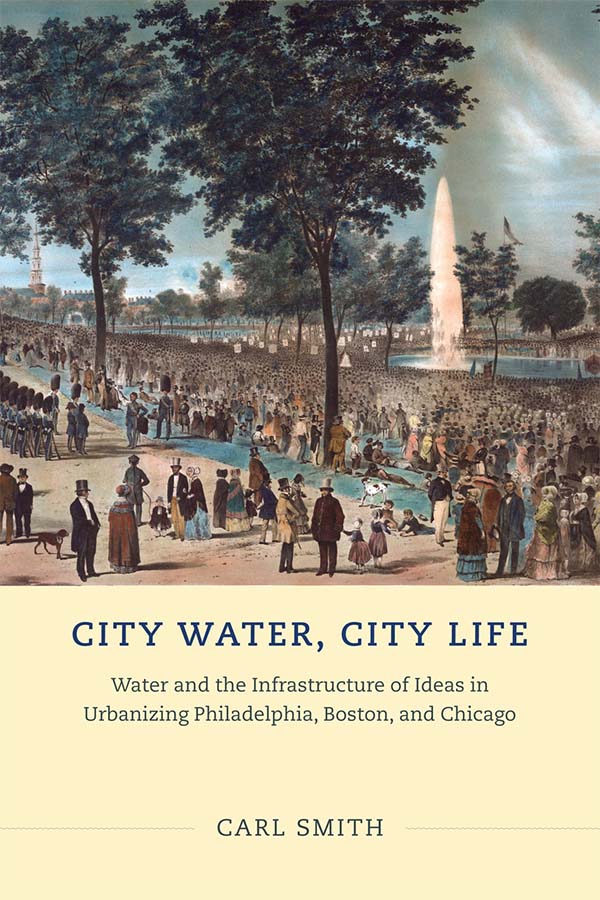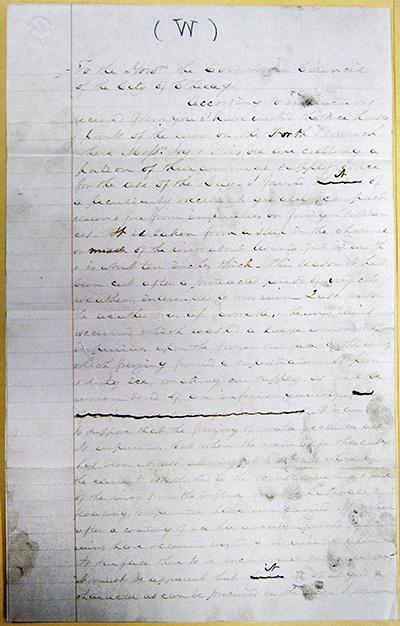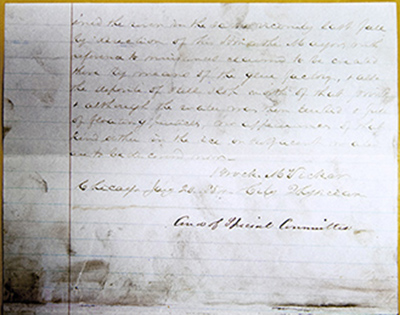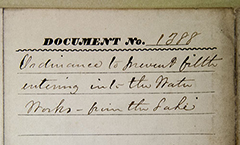
Listen to the 14 minute conversation:
Carl Smith, Professor of English, American Studies, and History at Northwestern University spoke with me about some aspects of the history of Chicago's water supply that he covered in his recent book, City Water, City Life: Water and the Infrastructure of Ideas in Urbanizing Philadelphia, Boston, and Chicago.
As part of our conversation Smith mentioned the horribly contaminated state of the Chicago River and the irony of being situated alongside a vast amount of fresh water. He described the north branch of the river as being "polluted unspeakably, beyond description, in smell and color and taste." Smith also detailed several early attempts to alleviate the problem by forcing the river to flow away from the lake.

Carl Smith's book from the
University of Chicago Press.
|

 Courtesy of the Illinois Regional Archives Depository (IRAD) at Northeastern Illinois University.
Courtesy of the Illinois Regional Archives Depository (IRAD) at Northeastern Illinois University.
|
During my research on Chicago's lakeshore, I found four separate filth ordinances that warned against washing animals near the city's water intakes. See those ordinances here.

See other information related to the condition of the early water supply here.
<<------------
The 1854 document at the left, submitted to the mayor by Chicago's city physician, reports on the condition of the water supply.
To the Hon the Common Council of the City of Chicago
According to instructions received from you I have visited the ice houses & points of the river on the North Branch where Messr. Joy & Frisbee are cutting a portion of their annual supply of ice for the use of the City. I found it of a peculiarly excellent quality, compact, clean & free from impurities or foreign substances. It is taken from a strip in the channel or middle of the river about twenty feet in width & is about ten inches thick. This season it has been cut after a protracted period of very cold weather, interrupted by no rain. Last season the weather was less favorable, and heavy rain occurred, which washed a large amount of impurities upon the frozen ice face of the river, which freezing formed a superstratum of foam(?) and dirty ice, making our supply as will be remembered of an inferior quality. It is an error to suppose that the freezing of the water excludes all its impurities, but when the water as in this case has been at rest, allowing it to settle, & where by the currents established by the occasional rise & fall of the river from the influx from the Lake, all floating impurities have been carried off & when after a coating of ice has already formed & rains have occurred washing impurities upon the surface there to be incorporated with new ice – it must be apparent that it is as good a character as can be procured in the city. I examined the river in the same vicinity last fall by direction of his Honor the Mayor with reference to nuisances claimed to be created there by means of the glue factory, & also the deposits of still slop north of that point, & although the water was then turbid & full of floating particles, no appearances of that kind either in the ice or the adjacent water are to be found now.
Brock McVicker
City Physician, Chicago Jany 20, 1854
Cmsr of Special Committee |




